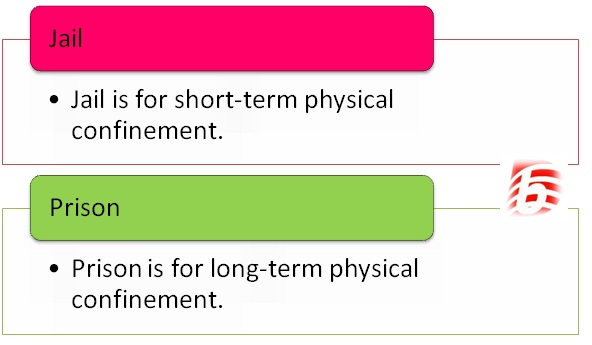Jail vs Prison
Although jail and prison might seem to have similar meanings, there are differences between the two. Both jails and prisons are designed and built for those who have failed to follow rules, regulations, and laws. Violating any of these can result in spending time in either a jail or a prison, both of which are places where wrongdoers are kept.
Jail
Jails are facilities where people are physically confined, usually with numerous restrictions on their freedom. Authorities typically hold offenders in jail while waiting for their trial or for temporary confinement. Jails are often compared to animal cages, with limited space, commodities, and access to the outside world.
Prison
Prisons, on the other hand, are intended for long-term physical confinement. Most wrongdoers stay in prison to serve their punishments. To help alleviate boredom and loneliness, prison authorities offer a variety of programs, such as gardening or creative activities. These programs aim to instill in inmates the importance of avoiding bad behavior in the future.
Key Takeaways
- Jails are typically for short-term confinement, while prisons are for long-term confinement.
- In the US, jails are usually run by local sheriffs and house small-time offenders, whereas prisons are run by the state or the Federal Bureau and house those convicted of more serious crimes.
- Prisons often offer programs to help inmates rehabilitate and avoid future criminal behavior.
